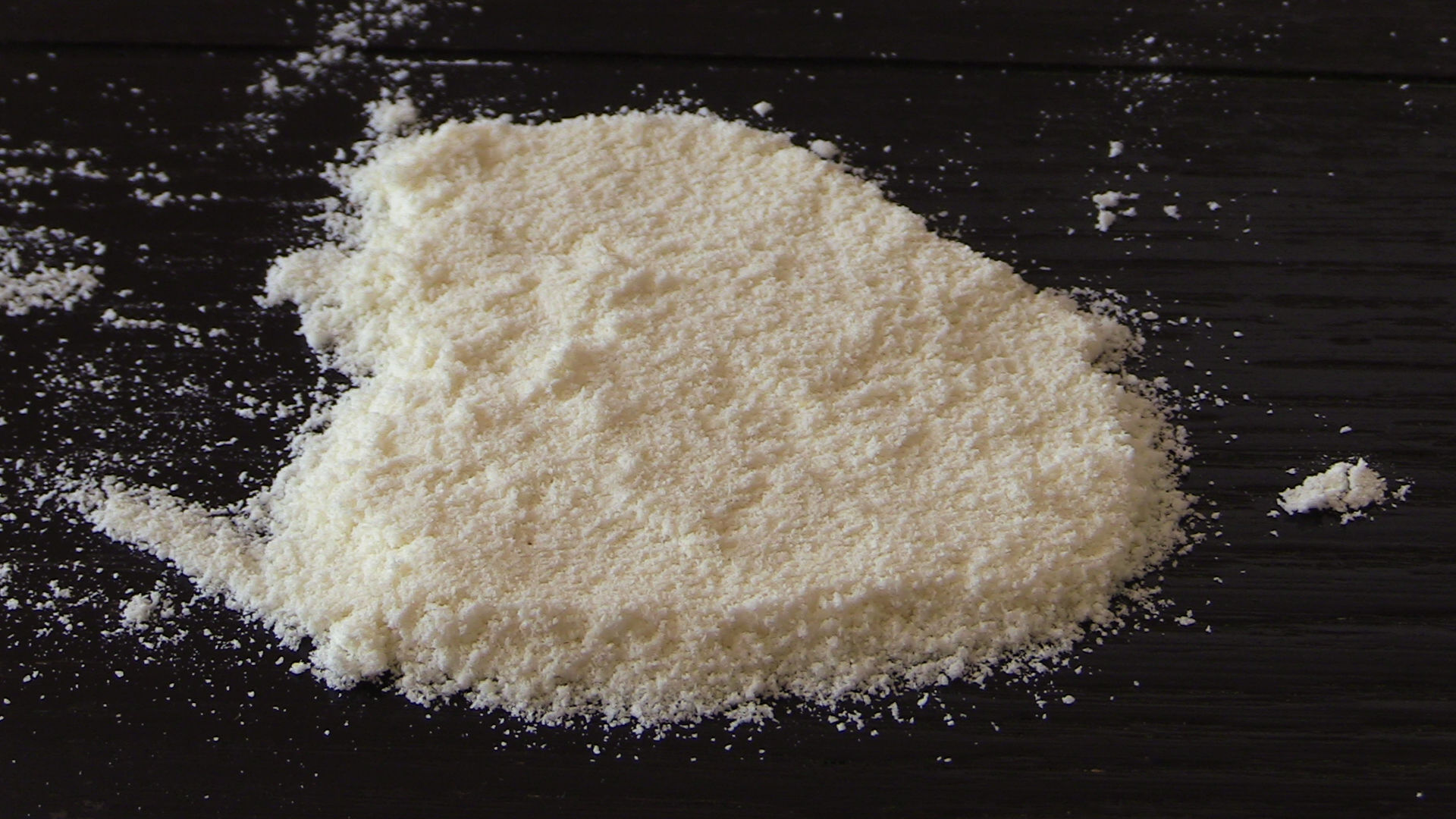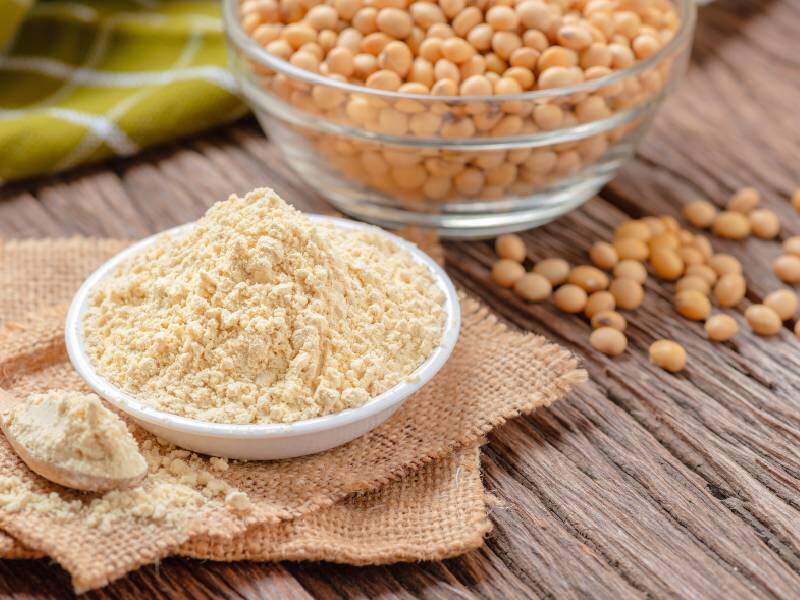Soy flour. It’s not just for health food fanatics anymore! This versatile ingredient is quietly making its way into kitchens everywhere, and for good reason. Packed with protein, fiber, and a whole host of other nutrients, soy flour can transform your cooking and baking. But if you’re like many people, you might be a little intimidated by this unfamiliar flour.
So, what exactly is soy flour? Simply put, it’s made from ground soybeans. That’s it! But the process is a bit more nuanced than just tossing some soybeans into a grinder. Soybeans are first cleaned and dehulled, then roasted (or not, depending on the type of flour), and finally ground into a fine powder. This powder is what we know as soy flour.
Now, here’s where things get interesting: there are different types of soy flour. You might encounter full-fat soy flour, which retains the natural oils of the soybean. This type adds richness and moisture to baked goods. Then there’s defatted soy flour, where the oil has been extracted. This results in a flour with a higher protein content and a longer shelf life. And finally, you might see lecithinated soy flour, which has lecithin (a natural emulsifier) added to it. This helps to improve the texture of baked goods and prevent them from becoming crumbly. Choosing the right type of soy flour depends on the recipe you’re making and the desired outcome.
Nutritionally, soy flour is a powerhouse. It’s an excellent source of protein, making it a fantastic addition to vegetarian and vegan diets. It’s also packed with fiber, which is essential for digestive health. Soy flour is a good source of iron, calcium, and other essential nutrients. Here’s a quick comparison of soy flour to all-purpose flour per 100g:
| Nutrient | Soy Flour (Defatted) | All-Purpose Flour |
|---|---|---|
| Protein (g) | 52 | 13 |
| Fiber (g) | 15 | 3.4 |
| Iron (mg) | 15 | 4 |
As you can see, soy flour significantly outperforms all-purpose flour in terms of protein and fiber. However, it’s important to note that soy flour is not a direct substitute for all-purpose flour in all recipes (more on that later!).
One question that often comes up is: Is soy flour gluten-free? The answer is yes, pure soy flour is naturally gluten-free. However, it’s crucial to check the packaging to ensure that it hasn’t been processed in a facility that also handles gluten-containing grains, as this could lead to cross-contamination. If you’re following a strict gluten-free diet, always look for certified gluten-free soy flour.

The Amazing Benefits of Soy Flour
Now that we know what soy flour is, let’s talk about why you should consider adding it to your culinary repertoire. The benefits are numerous, both nutritionally and culinarily.
From a health perspective, soy flour shines. Its high protein content is a major draw. Protein is essential for building and repairing tissues, supporting immune function, and keeping you feeling full and satisfied. This makes soy flour a great addition to smoothies, baked goods, or even savory dishes, boosting their protein content without significantly altering the flavor profile. The fiber in soy flour is another significant plus. Fiber promotes healthy digestion, helps regulate blood sugar levels, and can contribute to feelings of fullness, which can be beneficial for weight management. Some studies also suggest that soy consumption may play a role in heart health, thanks to compounds called isoflavones. These isoflavones have antioxidant properties and may help lower cholesterol levels. Soy flour can also be a valuable tool for managing blood sugar, as its high protein and fiber content help to slow down the absorption of carbohydrates. This can be particularly beneficial for people with diabetes or insulin resistance. Finally, for those following vegetarian or vegan diets, soy flour provides a concentrated source of plant-based protein, making it an indispensable ingredient.
Beyond its nutritional advantages, soy flour also brings some unique qualities to the kitchen. It can add a subtle nutty flavor to baked goods, enhancing their complexity. Soy flour also has the remarkable ability to create a light and airy texture in cakes and muffins, preventing them from becoming dense and heavy. It can even act as a binding agent in veggie burgers or meatloaf, helping to hold ingredients together. In certain recipes, soy flour can also enhance the browning of baked goods, creating a beautiful golden crust. It’s a true multi-tasker in the kitchen!

Baking with Soy Flour: Tips and Tricks for Success
Now for the fun part: putting soy flour to work in your baking! This is where things can get a little tricky, as soy flour doesn’t behave exactly like all-purpose flour. But with a few key tips and tricks, you’ll be baking delicious soy-infused treats in no time.
Soy Flour Substitution Ratios: Getting it Right
One of the most common questions about cooking with soy flour is how to substitute it for other flours. The general rule of thumb is to replace about 25-30% of the all-purpose flour in your recipe with soy flour. So, if a recipe calls for 1 cup of all-purpose flour, you could use ¾ cup of all-purpose flour and ¼ cup of soy flour. However, this is just a starting point. The ideal ratio can vary depending on the recipe and the type of soy flour you’re using. For example, defatted soy flour tends to absorb more liquid than full-fat soy flour, so you might need to adjust the amount of liquid in your recipe. It’s always a good idea to start with a smaller substitution ratio and gradually increase it as you become more comfortable with soy flour.
| Recipe Type | Soy Flour Substitution Ratio | Notes |
|---|---|---|
| Cakes | 20-25% | Can create a lighter, airier texture. |
| Cookies | 25-30% | May require slight adjustments to prevent dryness. |
| Bread | 15-20% | Adds protein and improves texture; can be used in combination with vital wheat gluten. |
| Muffins/Pancakes | 25-30% | Adds a nutritional boost and a subtle nutty flavor. |
Mixing and Handling Soy Flour: Avoiding Common Mistakes
Soy flour can be a bit more finicky than all-purpose flour when it comes to mixing. It tends to absorb liquid more readily, so it’s important to mix it thoroughly with the other dry ingredients before adding any wet ingredients. This will help to prevent lumps from forming. Also, be careful not to overmix your batter or dough, as this can lead to tough or dense baked goods. Just mix until the ingredients are combined, and then stop. Overmixing develops the gluten in wheat flour, which can make baked goods chewy. While soy flour doesn’t contain gluten, overmixing can still negatively impact the final product.
Soy Flour Baking Tips for Different Recipes
- Cakes: Soy flour can create a wonderfully light and fluffy texture in cakes. Just remember to use the appropriate substitution ratio and avoid overmixing.
- Cookies: Soy flour can add a subtle nutty flavor to cookies. However, it can also make them a bit dry, so you might need to add a little extra moisture (like a tablespoon of milk or oil).
- Bread: Soy flour can be a great addition to bread recipes, adding protein and improving the texture. However, it’s often best used in combination with vital wheat gluten to ensure a good rise.
- Muffins and Pancakes: Soy flour is a fantastic way to add a healthy boost to muffins and pancakes. It adds protein and fiber without significantly altering the flavor.

Beyond Baking: Savory Applications of Soy Flour
While soy flour is a star in the baking world, its versatility extends far beyond cakes and cookies. This unassuming ingredient can also play a crucial role in savory dishes, adding both nutritional value and unique textural elements.
Soy Flour as a Thickening Agent
Soy flour can be a surprisingly effective thickening agent for sauces, gravies, and stews. It works similarly to cornstarch or other thickeners, absorbing liquid and creating a smooth, creamy consistency. However, there’s a trick to using soy flour as a thickener: you need to prevent lumps from forming. The best way to do this is to whisk the soy flour into a small amount of cold liquid (water or broth) until you have a smooth paste. Then, gradually whisk this paste into your hot sauce or stew, stirring constantly to prevent lumps. Soy flour thickens best when heated gently, so avoid boiling your sauce vigorously after adding the soy flour.
Soy Flour in Meatless Dishes
For vegetarians and vegans, soy flour can be a game-changer. Its high protein content makes it an ideal ingredient for creating meat substitutes like veggie burgers, meatballs, and tofu scrambles. Soy flour helps to bind these dishes together, giving them a more substantial texture. It also contributes a subtle savory flavor that complements other ingredients. When using soy flour in meatless dishes, it’s often combined with other ingredients like breadcrumbs, vegetables, and spices to create flavorful and satisfying meals.
Soy Flour in Other Savory Recipes
The possibilities for using soy flour in savory cooking are virtually endless. Try adding a tablespoon or two to your favorite soup or chili for a boost of protein and a slightly thicker consistency. Soy flour can also be used in breading for fried foods, creating a crispy coating that’s higher in protein than traditional breading. It can even be added to gravy for a richer flavor and a smoother texture. Don’t be afraid to experiment and see how soy flour can enhance your favorite savory dishes. It’s a fantastic way to add a nutritional punch and a unique touch to your cooking.
Mastering Soy Flour: Expert Tips and Tricks
Cooking with soy flour can be a rewarding experience, but like any new ingredient, it comes with a few nuances. Here are some expert tips and tricks to help you master soy flour and avoid common pitfalls:
-
Storage Tips: Soy flour is prone to going rancid due to its oil content (especially full-fat soy flour). To keep it fresh, store it in an airtight container in a cool, dark place, or even better, in the refrigerator or freezer. Properly stored soy flour can last for several months.
-
Preventing a “Beany” Flavor: Some people find that soy flour can impart a slightly “beany” flavor to baked goods. To minimize this, you can lightly toast the soy flour in a dry skillet over medium heat before adding it to your recipe. Just be careful not to burn it! Another trick is to use a small amount of a strong flavor, like cocoa powder in chocolate recipes or a pinch of spices in savory dishes, to mask any lingering beany taste.
-
Troubleshooting Common Problems:
- Dry Baked Goods: If your soy flour baked goods are coming out dry, it’s likely because soy flour absorbs more liquid than all-purpose flour. Try adding a tablespoon or two of extra liquid (milk, oil, or water) to your recipe next time.
- Dense Baked Goods: Dense baked goods can be a result of overmixing. Remember to mix your batter or dough just until the ingredients are combined, and then stop.
- Lumpy Batter: Lumps in your batter usually mean the soy flour wasn’t properly mixed with the dry ingredients. Whisk the soy flour thoroughly with the other dry ingredients before adding any wet ingredients.
-
Where to Buy Soy Flour: Soy flour is becoming increasingly common and can be found in most well-stocked grocery stores, especially in the baking aisle or the health food section. You can also find a wider variety of soy flour types (full-fat, defatted, lecithinated) at health food stores or online retailers. When buying online, check reviews and ensure the vendor has a good reputation.
(Soy Flour FAQs)
We’ve covered a lot of ground, but you probably still have some questions swirling around in your mind. Let’s tackle some of the most frequently asked questions about soy flour:
-
Is soy flour healthy? Yes, soy flour is generally considered a healthy ingredient. It’s a good source of protein, fiber, iron, and other essential nutrients. However, as with anything, moderation is key.
-
Can I substitute soy flour for all-purpose flour? No, you can’t directly substitute soy flour for all-purpose flour in most recipes. You’ll need to use a specific substitution ratio (typically around 25-30%) and potentially adjust the amount of liquid in your recipe.
-
How do I store soy flour? Store soy flour in an airtight container in a cool, dark place, or in the refrigerator or freezer, to prevent it from going rancid.
-
Does soy flour taste like soy? Soy flour can have a slightly nutty or “beany” flavor, especially if it’s not toasted. However, this flavor is usually subtle and can be masked with other ingredients.
-
Is soy flour gluten-free? Yes, pure soy flour is naturally gluten-free. However, it’s essential to check the packaging to ensure that it hasn’t been processed in a facility that also handles gluten-containing grains. Look for certified gluten-free soy flour if you are following a strict gluten-free diet.
-
Where can I buy soy flour? You can buy soy flour at most grocery stores, health food stores, and online retailers.
The Versatility of Soy Flour: A Kitchen Staple
Soy flour is more than just a passing health food fad. It’s a versatile and nutritious ingredient that deserves a place in every kitchen. From boosting the protein content of baked goods to acting as a thickening agent in savory dishes, soy flour offers a wealth of culinary possibilities. Don’t be afraid to experiment with it and discover its unique properties. With a little practice and these handy tips, you’ll be a soy flour pro in no time, creating delicious and healthy meals for yourself and your loved ones. Now go forth and unleash the power of soy!
Leave a Reply